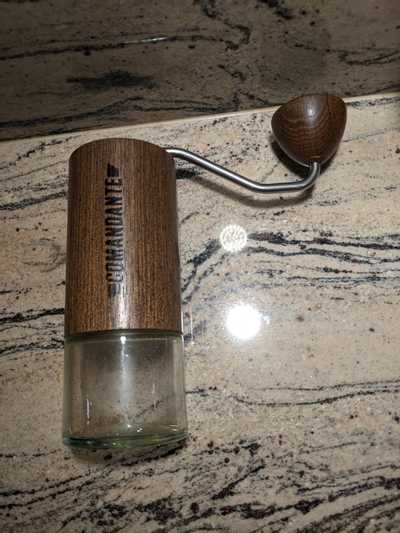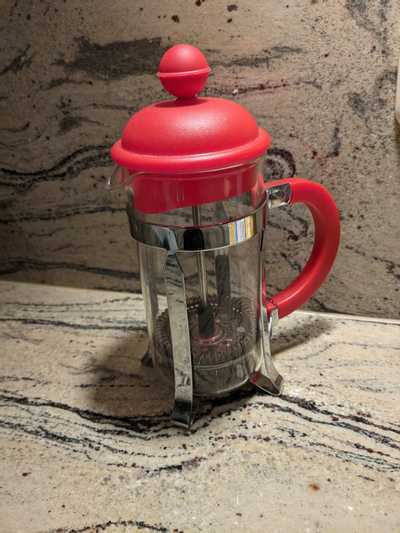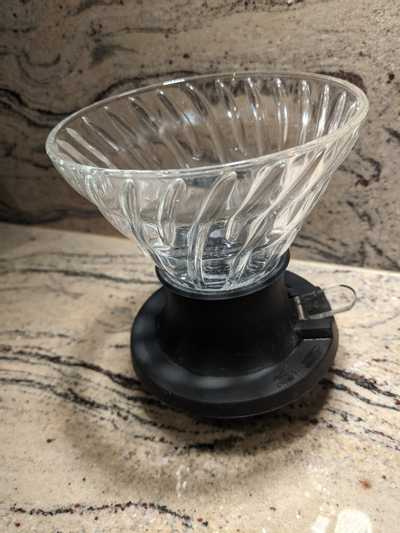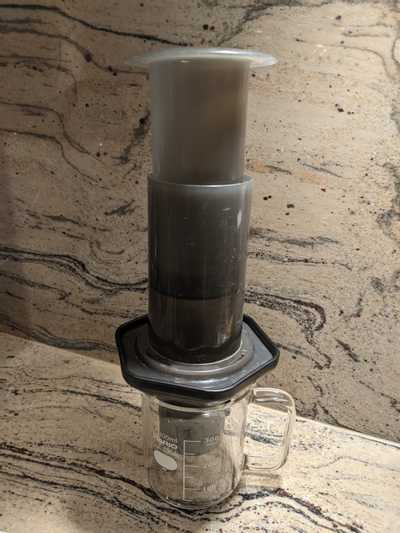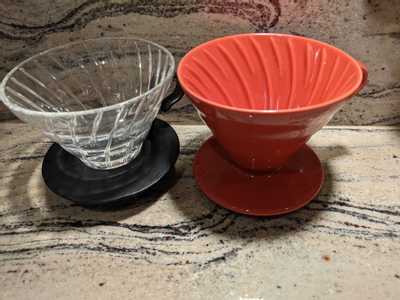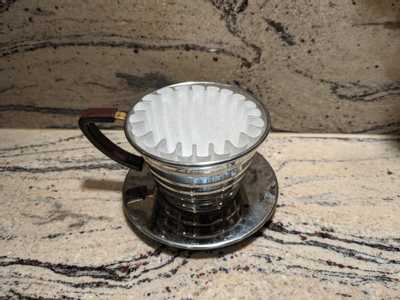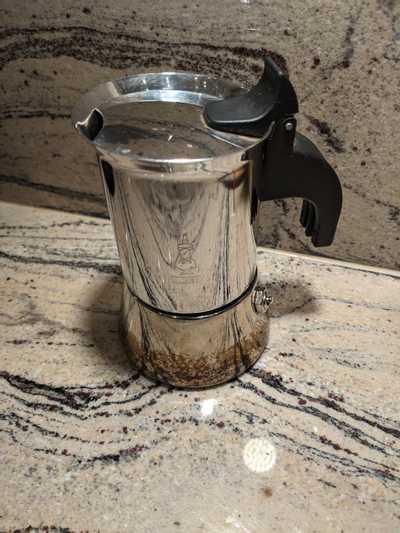Coffee
January 03, 2021
After nerding out on coffee in 2020 due to being in a remote setting for most of the year, I decided to put together this guide based on my experiences and taste. It is completely subjective and you might like other flavors than I do. In fact the coffee taste is even different between me and my wife.
Ingredients
Let’s start with the main ingredients: Coffee and Water.
Use fresh coffee beans
You want to grind beans right before brewing. Pre-ground coffee loses flavor quickly and therefore is not recommended. You should spend a bit on the beans, preferable from small, local roasters to support their business and more importantly because they usually provide a good quality. A couple of roasters I’ve tried so far: Supremo, Murnauer Kaffeerösterei, The Barn Berlin, Neue Rösterei Lübeck, Vogelmaier. There is a huge variety in coffee regions and coffee varieties with very different taste profiles ranging from fruity / blueberry (e.g. ethiopian Heirloom) to chocolatey notes in Brasilian ones. I would recommend picking a single roaster and trying various different coffees to find the regions which you like before broadening. Also the roasting profile affects the taste, I’ve become a fan of lighter roasts.
Water
For water you might be lucky to have excellent water out of the tap. I’m not so lucky and thus using a Brita filter to reduce water hardness. You aim to be in the range of 8 dH - 13 dH for best results. Most importantly the water should taste pleasantly before making coffee, else the coffee also cannot excel. There are also mineral kits available which you can put into pure distilled water to reach a good quality. I’ve not tried this and probably only recommend this if your water is really bad.
Espresso vs Manual Brew methods
Espresso is vastly different from the others since it requires a lot more upfront investment, because to excel it requires both a very good grinder and an at least somewhat solid espresso machine, which can keep a constant temperature at high pressures. I’ve experimented with a Breville/Sage Barista Touch espresso maker, but couldn’t get the desired results or it didn’t match my taste profile. I’m focussing in the following sections on the manual brew methods.
Equipment
A basic set of equipment is required for most brew methods
Grinder
The most important part for creating good coffee is the grinder. The difference between good and bad lies here in the particle distribution of the ground coffee plus speed in a professional setting.
I started out with a Baratza Encore in 2019, which together with the Wilfa Svart is often recommended as an entry level solution for filter coffee. Espresso needs a better grinder, some entry level solutions here are the Eureka Mignon Specialita and Baratza Sette 270.
In 2020 an upgrade to the Encore was due and after some research I settled on the Commandante C40 hand grinder. The grind distribution, which affects brew quality in a major way, is much more uniform and actually en-par with commercial grade grinders. In a home setting for me manual grinding is perfectly fine, but if you have a higher throughput you might want to look one level above in the direction of Niche Zero, which is a very good single dosing grinder.
If you want to start out on a budget: Get a Timemore C1 hand grinder. It’s value proposition is very good and it can produce very good grind distributions for a low amount of initial investment. I bought a Hario Mini hand grinder for work in 2019 and in comparison the Timemore is a lot better while only costing a bit more.
If you aim for the top end commercial grade grinders such as the Mahlkönig EK43 pop up. They usually focus on speed, which is required in a well running cafe.
Scale
My recommendation is using a scale with at least gram precision, a fast response time and a timer. The main purpose is controlling the amount of coffee and water to ensure a consistent brew ratio. I’m using the Timemore Black Mirror, which I bought from Aliexpress. Investment here is not the priority, since you can start with a cheap scale, e.g. from Amazon and using the timer on your phone. It’s less convenient though.
Gooseneck kettle
While you can start with a normal water boiler (which is even enough for french press and to a certain extent Aeropress), I’d recommend a gooseneck kettle for more control. I’ve moved into using the Hario one which works well with induction in 2020. Additionally I’ve been using a digital meat thermometer to measure the water temperature, which has a significant impact on the brewing. Since this is kinda cumbersome I’ve recently gotten an upgrade, the Fellow Stagg EKG, which has digital temperature control and a hold functionality for christmas. It significantly improved my workflow, so full recommendation on this one.
Storage
There are a lot of discussions around on how to store coffee. What seems to be needed: Air sealed and dark. The Illy cans seem to be a good low cost option. I’ve recently gotten a fellow vaccuum storage container, which seems to be the best option on the market. You should always store the beans, not ground coffee. Freezing and similar things don’t seem to be necessary.
Here you can see the Timemore Black Mirror Scale + Fellow Stagg EKG in the front and the Fellow Vaccuum container in the back
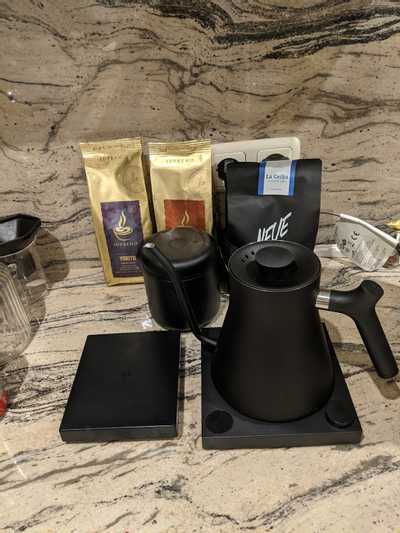
Brew Methods
The coffee market is exploding with a wide variety of brewers. I’m presenting the most common ones in the next sections. Note: The recipes are only meant as starting point and there are a lot more recipes available plus they usually need adjustments of the brew parameters. I’m gonna provide the clicks (= coarseness setting) on the commandante grinder.
Brew Parameters
The most important brew parameters for making coffee are:
- Grind size
- Water temperature (usually 92 - 96 C)
- Coffee / water ratio (usually 1:14-1:16)
- Brew time
Dialing in
Usually you need to adjust the brew parameters based on the coffee used, which leads to derivations of the original recipe. As with any somewhat scientific approach: Only change one parameter at a time and try multiple times. The Coffee compass can help you to adjust the brewing based on the taste profile youre experiencing. https://www.baristahustle.com/blog/the-coffee-compass/ With grind size it’s usually recommended to go finer until you hit over extraction (astringent, bitter mouthfeel) and then go back a few steps. There is a close line between over extracted and well extracted to get out full flavors. One adjustment I’m usually doing with Ethiopians: hotter water and finer grind size due to the properties of the Heirloom variety.
French Press
The french press is an immersion brew method. This means that the coffee grounds are in contact with water over a prolonged period of time. It leads to a very consistent extraction and in general is a very simple way of brewing coffee. The major disadvantage are fine coffee particles not caught by the metal mesh filter in the coffee plus the coffee oils in the cup which might create a bold mouthfeel. My recipe
- Grind coarsely (28 clicks on Commandante)
- use 62.5 g of coffee for a 1 liter french press
- water temperature 95 C
- Add coffee to the french press
- Pour in a bit of water so all grinds are wet and let it steep for 30 seconds. This is called blooming and will foster degassing of the ground coffee
- Fill it up and wait 3:30 minutes
- Stir it and put the plunger with the metal mesh on top, but don’t press down yet
- Wait another 4 minutes for the particles to settle down, then gently push down the plunger without creating turbulences
Clever Coffee Dripper / Hario Switch
Those are immersion brew methods as well. The general idea here is to remove the sediment and oils with a filter to enhance the french press experience. They are built like filters with holes in the bottom, but have a locking mechanism to prevent water flowing through until desired. I’ve recently gotten the Hario Switch which has better haptics than the Clever Dripper, but the latter is a lot cheaper. Both of them are also very simple to use and hard to not get right once the basic parameters are roughly dialed in.
My recipe for the Switch
- drain the filter with hot water to remove bad paper taste
- 15g coffee
- 250 ml water at 94 C
- switch closed, drop in grounds, fill up
- let it steep 2:00
- stir 15 secs
- open switch
Aeropress
The Aeropress is a convenient, flexible and simple coffee maker. It’s easy to clean and allows for a big margin of error. If I could recommend only one brew method: This is it. It’s super flexible and can produce a lot of different coffee flavors.
I’m using it with the normal paper filters, but there are also re-usable metal mesh filters and some which are designed to emulate espresso.
My go to recipes as links:
A very solid receipe, which produces consistently good results (24 on commandante): https://aeroprecipe.com/recipes/tim-wendelboe
This one produces magic cups more often than not, but uses a lot of coffee per cup. (28-30): https://aeroprecipe.com/recipes/2017-wac-1st-place The linked page is full of good recipes which allow for a lot of experiments. The Aeropress is also super convenient for traveling due to small size and plastic build which is hard to break.
Hario V60
The V60 has been on the market a long time and used in a lot of high profile cafes. The name originates from the 60 degree angle of the cone walls. It has a large hole in the bottom for a high basic flow rate. The grooves in the wall allow for airflow and thus a faster drawdown for a more consistent extraction. The brew time is controlled mostly by how fine the coffee has been ground. You’re aiming in general for around 2:45 - 3:15 minutes of total brew time. If you brew large batches the brew time prolongs and grind size should also become a bit coarser. Brewing with this can result in magic cups, but in my experience it is very hard to get consistently and the water quality needs to be outstandingly good.
Watch this video by Scott Rao showing the basic technique (on a kalita wave…) https://www.youtube.com/watch?v=BjsGf3R9mc0
Recipe
- Grind 18g of coffee at around 22-26 on the commandante
- Total: 300g of water at 93 C
- Pre-wet the filter
- Put the grounds into the filter and form a small pit
- Add 50g of water and let it bloom for 30-45 secs
- Add 150g of water slowly in spiraling motions
- At around 1:30 fill in the remaining 100ml also in slow spirling motions
- Give it a quick stir and let it draw down
- Once finished stir the coffee in the cup
Kalita Wave 155
For me the Kalita wave is a lot more consistent compared to the V60. Unfortunately it’s a bit hard to get in Germany, so I imported directly from Japan. It has a flat bottom and three small holes on the bottom which should lead to an even extraction. Airflow is guaranteed by the shape of the filter papers. The Kalita Wave is available in a wide range of materials and two sizes (155/185). The 155, which I own in the stainless steel variant, is perfect for a single cup of coffee. I enjoy the good build quality and consistent results.
My recipe (adapted from https://www.georgehowellcoffee.com/brew-guide/kalita-185/)
- 15g coffee at 23 on the commandante
- 250 ml water at 93 C
- Pre-wet the filter
- Fill in coffee, shake until it’s even
- Start timer
- within 15 secs fill in 50ml water in a spiraling motion from the inside to the outside and back in
- wait 15 secs
- repeat 4 times until you hit a total of 250 ml
Moka Pot aka Bialetti
We have a Bialetti Venus with 12g coffee volume. Contrary to popular belief, it does not produce espresso (due to the missing pressure). It produces a very strong coffee, which is often bitter. The key to getting the brew right: Fill the bottom with already hot water to just under the steam valve. Put in the ground coffee (17-20 clicks), but do not compress it in any way. This can create channeling (water channels instead of water going through evenly distributed) and as consequence an uneven extraction leading to bitterness. Put it on medium heat onto the oven. Keep the cap open to watch the extraction. If it starts hissing immediately cool it down under cold water. Hopefully the result is not bitter. Unfortunately it’s still not very consistent, but mostly good.
Fake Cappuccino
Brew roughly a doppio in the moka pot (the 12g moka pot is perfect). Warm up milk / Barista oat milk. Use a Bodum French press to create milk foam (or the dedicated milk foamer from Bodum). Enjoy. It’s a surprisingly close result to a real cappucino, often even better than what you get in normal cafes.
References
- James Hoffmann Youtube
- Kaffeemacher Youtube
- Kaffeemacher Website
- /r/coffee Reddit
- Aeroprecipe
Personal blog by Martin Lechner
Thoughts about (functional) programming

